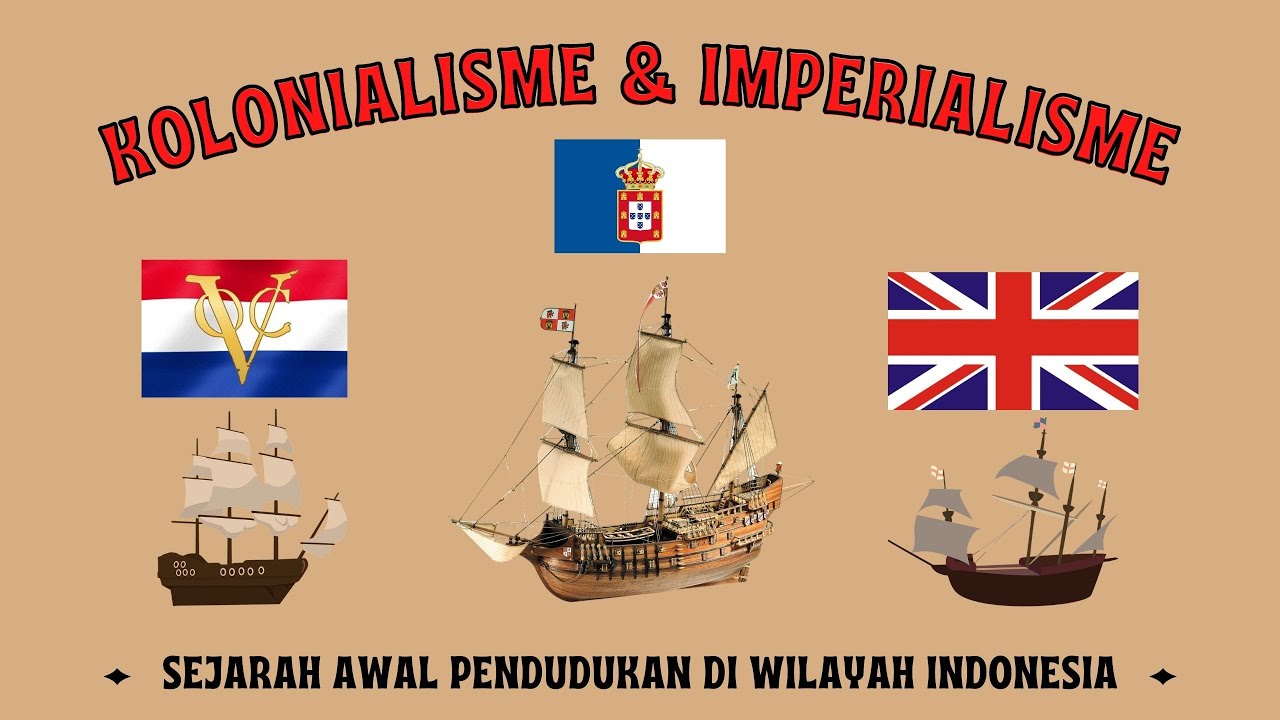Katolik Di Kep. Tanimbar
Summary
TLDRThe transcript details the history of Catholic missionary work in the Tanimbar Islands, Indonesia, beginning in the late 19th century. It chronicles the efforts of key figures such as Pastor SY in the 1880s, the challenges in gaining approval from the Dutch authorities, and the eventual establishment of missions by the early 20th century. The Catholic Church's presence grew rapidly despite initial setbacks, driven by the openness of the local communities and support from laypeople. By the 1920s, the church's mission centers flourished, contributing to both religious and educational development in the region.
Takeaways
- 😀 The Catholic Church began its mission in the Tanimbar Islands in 1888, with efforts led by Pastor SY in the Kei Islands.
- 😀 Initial attempts to spread Christianity in Tanimbar faced delays, including bureaucratic hurdles and security concerns from the Dutch colonial government.
- 😀 In 1918, Dr. Mathias Means, the Apostolic Prefect of Dutch New Guinea, visited the area, but faced challenges in establishing the mission due to existing Protestant efforts.
- 😀 A key moment in the Catholic mission occurred in 1910 when the church decided to begin its mission on Yamdena Island, the largest of the Tanimbar Islands.
- 😀 Father Yosep and Pastor Edward arrived in Tanimbar in September 1910, starting their work among the local communities.
- 😀 Initially, missionaries encountered resistance, including hostile interactions with locals who approached them with bows and arrows.
- 😀 The Catholic mission established its first station in Olilit in January 1911, with Father KLSMC as its head.
- 😀 In 1911, the first educational efforts began, with missionaries taking on roles such as teachers and community leaders to address local needs.
- 😀 By 1917, a boarding school was opened, and the first vocational training school was established in 1930, marking significant steps in local education.
- 😀 Despite challenges, the Catholic mission grew quickly, reaching 3,421 Catholics by 1917 and including over 900 baptism candidates across 22 villages.
- 😀 The mission’s rapid growth can be attributed to the local community's openness to new ideas, their free-spirited nature, and the support of local laypeople in educational and religious efforts.
Q & A
When did the Catholic Church begin its mission in the Tanimbar Islands?
-The Catholic Church began its mission in the Tanimbar Islands with the efforts of Pastor posters SY in the Kei Islands in 1888, with subsequent attempts to extend this mission to the Tanimbar Islands.
What was the first step in initiating the Catholic mission in the Tanimbar Islands?
-The first step involved Monsignor Crescent, the Vicar Apostolic of Batavia, sending a letter to the Governor-General of the Dutch East Indies in 1892 to request permission to start the mission in the Tanimbar Islands.
Why was the mission initially delayed by the Dutch colonial government?
-The mission was delayed due to security concerns in the Tanimbar Islands, as the region was considered unstable, and the Governor-General did not grant the request at that time.
What role did Dr. Mathias from the MSC play in the Catholic mission's development?
-Dr. Mathias, as the Prefect Apostolic of Nederlands Nieuw Guinea (Papua), visited the Tanimbar Islands and attempted to initiate the mission. However, logistical and political factors delayed its start.
What significant development occurred in 1910 regarding the Catholic mission in the Tanimbar Islands?
-In 1910, the Catholic Church decided to begin its mission in the Tanimbar Islands starting from Yamdena Island, with key personnel including Paspor Yosep and Pastor Edward, who arrived in the region to establish the mission.
How did the local communities react to the arrival of the Catholic missionaries?
-The local communities initially showed some hostility, as seen when young villagers approached the missionaries with bows and arrows. However, the missionaries were eventually guided to the village of Olilit.
What was the first Catholic center established in the Tanimbar Islands?
-The first Catholic center was established in the village of Olilit, where Paspor KLSMC settled, marking the foundation of the Catholic mission in the region.
What challenges did the Catholic missionaries face in spreading their message?
-The missionaries faced challenges such as the widespread adherence to traditional religions and the difficulty of reaching distant villages, compounded by limited missionary personnel.
What impact did the Catholic mission have on education in the Tanimbar Islands?
-The Catholic mission played a significant role in education by establishing schools and training local teachers, focusing on both spiritual teachings and practical skills like carpentry.
How did the social and cultural context of the Tanimbar Islands influence the success of the Catholic mission?
-The Tanimbar Islands' society, which was free from external conquests and open to new ideas, along with its existing cultural respect for tradition and ancestors, created a fertile ground for the Catholic missionaries to share the message of Christ.
Outlines

This section is available to paid users only. Please upgrade to access this part.
Upgrade NowMindmap

This section is available to paid users only. Please upgrade to access this part.
Upgrade NowKeywords

This section is available to paid users only. Please upgrade to access this part.
Upgrade NowHighlights

This section is available to paid users only. Please upgrade to access this part.
Upgrade NowTranscripts

This section is available to paid users only. Please upgrade to access this part.
Upgrade NowBrowse More Related Video
5.0 / 5 (0 votes)





